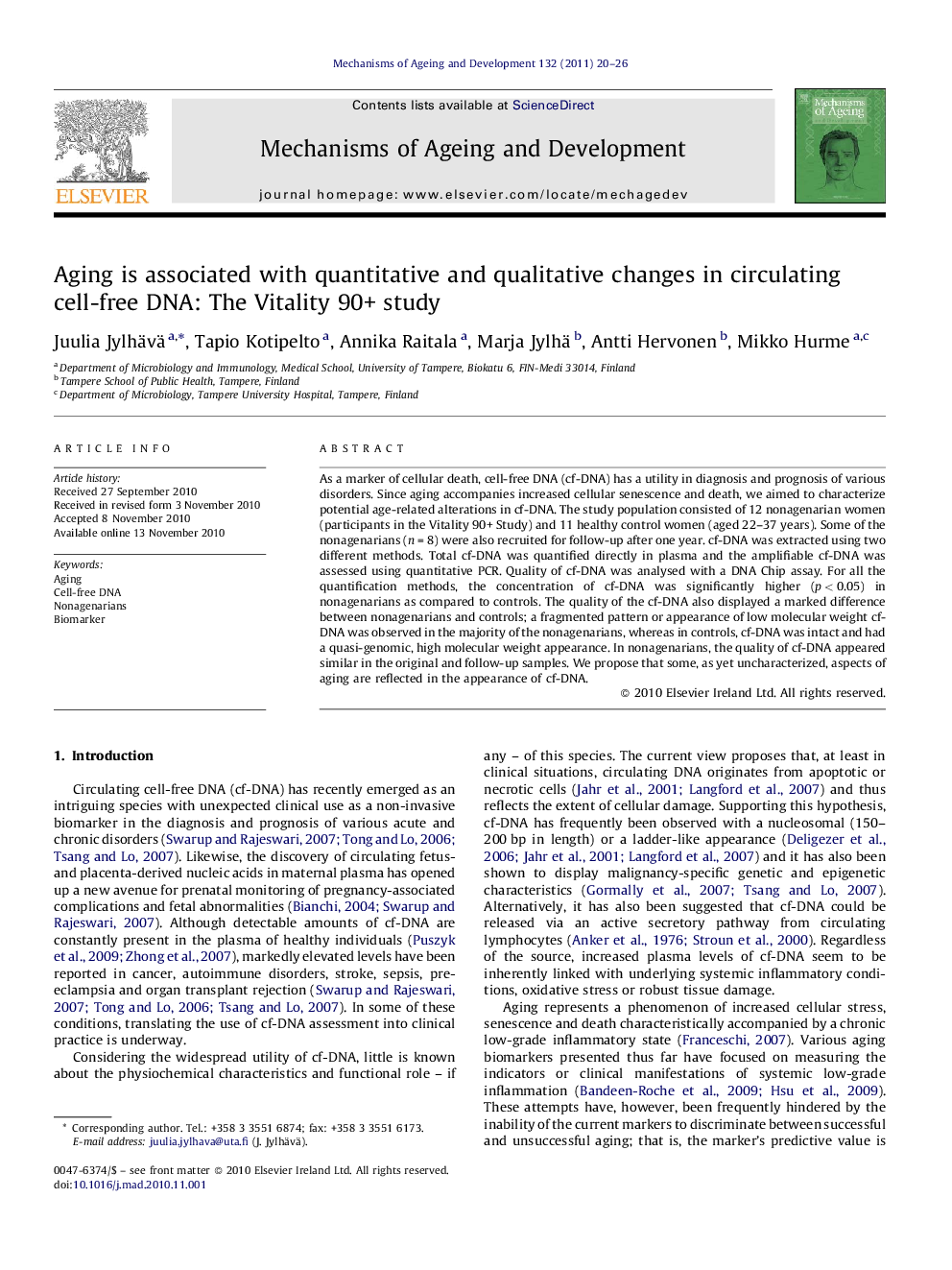| Article ID | Journal | Published Year | Pages | File Type |
|---|---|---|---|---|
| 1919367 | Mechanisms of Ageing and Development | 2011 | 7 Pages |
As a marker of cellular death, cell-free DNA (cf-DNA) has a utility in diagnosis and prognosis of various disorders. Since aging accompanies increased cellular senescence and death, we aimed to characterize potential age-related alterations in cf-DNA. The study population consisted of 12 nonagenarian women (participants in the Vitality 90+ Study) and 11 healthy control women (aged 22–37 years). Some of the nonagenarians (n = 8) were also recruited for follow-up after one year. cf-DNA was extracted using two different methods. Total cf-DNA was quantified directly in plasma and the amplifiable cf-DNA was assessed using quantitative PCR. Quality of cf-DNA was analysed with a DNA Chip assay. For all the quantification methods, the concentration of cf-DNA was significantly higher (p < 0.05) in nonagenarians as compared to controls. The quality of the cf-DNA also displayed a marked difference between nonagenarians and controls; a fragmented pattern or appearance of low molecular weight cf-DNA was observed in the majority of the nonagenarians, whereas in controls, cf-DNA was intact and had a quasi-genomic, high molecular weight appearance. In nonagenarians, the quality of cf-DNA appeared similar in the original and follow-up samples. We propose that some, as yet uncharacterized, aspects of aging are reflected in the appearance of cf-DNA.
Research highlights▶ Nonagenarian women have elevated total and amplifiable circulatory cf-DNA levels as compared to young controls ▶ In the majority of the nonagenarians, cf-DNA is fragmented over a wide size range or displays a low molecular weight appearance ▶ Fragmented or low molecular weight cf-DNA was not observed in the controls ▶ Both the quantity and quality of cf-DNA are different in nonagenarians and younger controls
